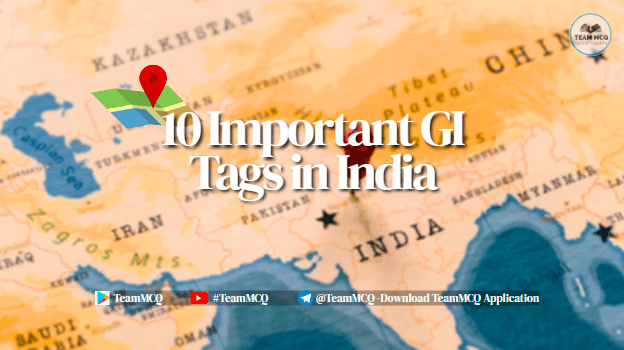Discover how GI Tags in India safeguard traditional crafts, foods, and heritage products—preserving cultural identity and supporting local economies.
Introduction: A Gateway to Understanding GI Tag
Ever wondered why certain products like Darjeeling Tea, Banarasi Sarees, or Kanchipuram Silk hold a unique charm that can’t be replicated? That’s the power of GI Tags in India — silent protectors of our cultural and regional identity.
Before we explore the list of 10 iconic examples, let’s understand what exactly a GI Tag is?
A Geographical Indication (GI) tag is a form of intellectual property right given to products that originate from a particular location and carry specific qualities, reputation, or characteristics unique to that place. It legally ensures that no one outside the designated region can falsely use the name to sell lookalikes. In other words, a GI Tag says, “This belongs here, and only here.”
In India, GI Tags are governed by the Geographical Indications of Goods (Registration and Protection) Act, 1999. The registry helps preserve traditional knowledge, promote indigenous crafts and crops, and boost rural economies by linking reputation with origin.
GI Tags in India cover a wide spectrum — from art forms and handlooms to spices, sweets, and even unique agricultural products. These tags aren’t just labels; they’re a mark of identity, pride, and authenticity.
In this article, we will explore 10 important GI Tags in India, highlighting what makes each one culturally, historically, and economically significant.
Let’s uncover the stories behind these treasured Indian icons.
Darjeeling Tea – The Champagne of Teas
When we talk about GI Tags in India, Darjeeling Tea is the undisputed pioneer. In fact, it was the first product in India to receive a GI tag in 2004. Grown in the misty hills of West Bengal’s Darjeeling district, this tea is more than just a beverage — it’s a global icon of flavor, aroma, and authenticity.
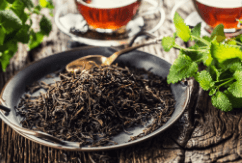
What makes Darjeeling Tea special is the region’s unique combination of elevation, climate, and soil. The tea leaves harvested here produce a light-bodied, musky-flavored liquor with floral undertones — often referred to as the “Champagne of Teas.” The flavor is so distinct that no other region, even with the same variety of plant, can replicate it.
The GI tag protects Darjeeling Tea from imitations. Only tea cultivated, grown, and processed in the 87 designated gardens of Darjeeling, using traditional methods, can be legally sold under the name. This safeguards not just the product but the livelihoods of thousands of small tea growers and workers in the region.
This GI tag also boosts India’s export market, as Darjeeling Tea enjoys huge demand in Europe, Japan, and the U.S. For students and enthusiasts learning about GI Tags in India, Darjeeling Tea is a textbook example of how origin and identity come together to create global value.
Whether sipped in a fine teacup or studied in classrooms, Darjeeling Tea continues to represent the essence of geographical pride in India.
Kanchipuram Silk Saree – The Queen of Indian Silks
Among the most celebrated GI Tags in India, the Kanchipuram Silk Saree holds a place of unmatched prestige and elegance. Officially granted GI status in 2005, this iconic saree comes from Kanchipuram in Tamil Nadu — a city renowned for its ancient weaving traditions that date back over 400 years.
Kanchipuram Sarees are traditionally handwoven from pure mulberry silk threads, with intricate zari (gold or silver thread) borders and mythological motifs inspired by temples, scriptures, and nature. These sarees are known for their durability, shimmer, and grandeur, often passed down as heirlooms across generations.
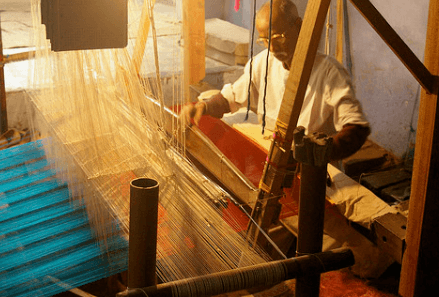

The uniqueness of Kanchipuram Silk lies in the way the body and the border of the saree are woven separately and then joined meticulously. This technique, known as korvai, ensures a strong bond, making the saree both beautiful and long-lasting.
The GI tag ensures that only sarees woven in the Kanchipuram region, by registered artisans using traditional methods, can be marketed as Kanchipuram Silk Sarees. This legal protection is crucial for preserving authenticity, supporting local weavers, and preventing mass-produced knock-offs from diluting the heritage.
For those studying GI Tags in India, this saree is a shining example of how geography and craftsmanship merge to form cultural identity. More than just a garment, the Kanchipuram Saree is a wearable piece of Indian history — worn with pride at weddings, festivals, and formal events.
Muga Silk of Assam – The Golden Thread of the Brahmaputra
When it comes to luxurious and durable silks, Muga Silk of Assam is a shining star among GI Tags in India. Granted GI status in 2007, Muga silk is exclusively produced in Assam and is famous for its natural golden hue, which becomes glossier with every wash.
The term Muga means yellowish in Assamese, and the silk is obtained from the semi-domesticated Antheraea assamensis silkworm, which feeds only on the leaves of Som and Soalu plants — plants native to the Brahmaputra Valley. This unique diet, along with Assam’s climate, contributes to the unparalleled sheen and strength of Muga silk.
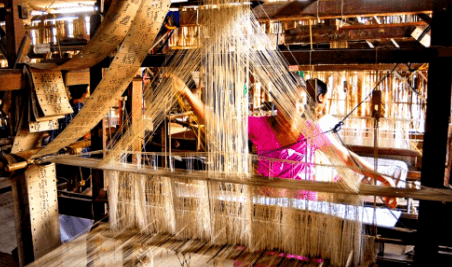

Unlike other silks, Muga doesn’t require dyeing, thanks to its natural golden tint. It is also resistant to weathering, and Muga silk garments can last for decades without losing their charm — making it a precious family heirloom in Assamese households.
The GI tag has helped in preserving the traditional sericulture of Assam, protecting indigenous practices, and offering economic support to tribal and rural weavers involved in the process. With global demand increasing, Muga silk now represents not only Assam’s legacy but India’s textile excellence on the world stage.
For anyone exploring GI Tags in India, Muga Silk is a stellar example of how nature, tradition, and artistry come together to create something truly timeless and irreplaceable.
Kannauj Perfume – India’s Eternal Fragrance Capital
Among the most unique GI Tags in India, Kannauj Perfume, also known as Kannauj Ittar, captures centuries of India’s olfactory heritage. This natural perfume, crafted in the town of Kannauj in Uttar Pradesh, was awarded GI status in 2014, securing its legacy as the perfume capital of India.
What makes Kannauj Perfume special? It’s crafted using ancient distillation methods called deg-bhapka, passed down through generations. Unlike modern perfumes that rely heavily on alcohol and chemicals, Kannauj Ittar is made from natural ingredients like rose, sandalwood, jasmine, vetiver, and herbs — soaked in a sandalwood oil base and matured over time.
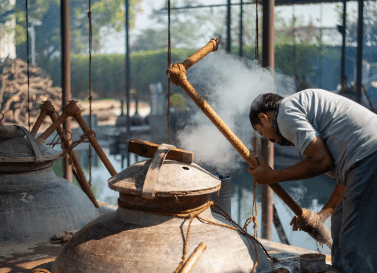
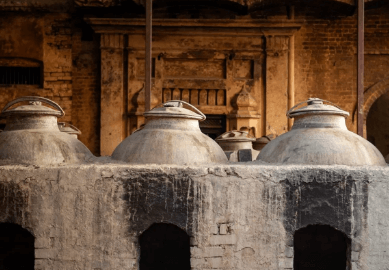
One of the rarest and most fascinating ittars is the “mitti attar” — a perfume made from the scent of wet earth after the first rain! It’s a beautiful expression of Indian creativity and deep connection with nature.
Kannauj’s heritage of perfume-making is over 1,000 years old, and it’s said that the Mughal emperors were among its biggest patrons. The GI tag not only safeguards this heritage but also supports the local artisans and small-scale distilleries who still rely on traditional techniques in a highly commercialized fragrance industry.
GI Tags in India like Kannauj Perfume are vital in preserving such vanishing crafts, ensuring that India’s sensory traditions don’t just fade away.
Bikaneri Bhujia – A Crunchy Legacy from Rajasthan
Among the tastiest GI Tags in India, Bikaneri Bhujia stands out as a crispy symbol of Rajasthan’s culinary heritage. This beloved snack, which received its GI tag in 2010, originates from the desert town of Bikaner, where it has been crafted with pride for over 150 years.
What makes it unique? Bikaneri Bhujia is made using moth dal (a local lentil), besan (gram flour), and a blend of regional spices — all carefully processed and deep-fried to golden perfection. Its delicate texture, spicy punch, and earthy flavor make it a household favorite not just across India, but worldwide.
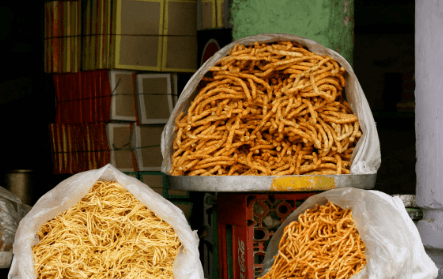
The GI tag for Bikaneri Bhujia ensures that only bhujia made in the geographical limits of Bikaner using the traditional recipe can be sold under the name. This protects both the authentic taste and the livelihood of local artisans, many of whom are small-scale producers or part of family-run businesses.
Beyond being a snack, Bikaneri Bhujia is a symbol of cultural pride and local identity. It has become an essential part of Rajasthani hospitality, festival platters, and even travel essentials for millions.
GI Tags in India like this one help highlight how even simple food items carry deep historical, social, and economic value. With every bite of authentic Bikaneri Bhujia, you’re tasting a piece of protected Indian tradition.
Mysore Sandalwood Oil – Liquid Gold of Karnataka
Among the most prestigious GI Tags in India, Mysore Sandalwood Oil holds a place of honor. Awarded the GI tag in 2006, this fragrant oil is derived from the Santalum album species of sandalwood, native to the southern regions of India, especially Karnataka.
What makes it so iconic? Mysore Sandalwood Oil is known for its exceptionally high α-santalol content — the compound responsible for its calming aroma and medicinal properties. The oil is steam-distilled from heartwood and roots of mature trees, often aged over 20 years, making it incredibly rare and valuable.
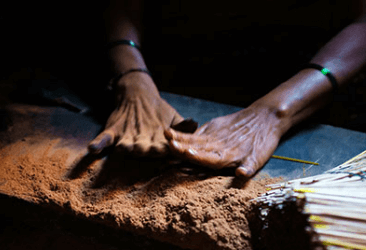
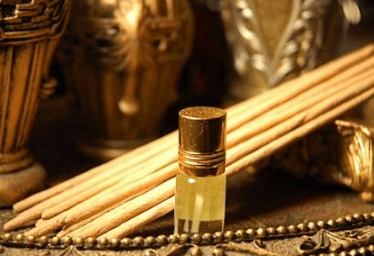
Used in ayurveda, perfumery, and religious rituals, this oil has been cherished since ancient times. In fact, during the reign of the Wodeyar dynasty, sandalwood was called “the royal tree,” and the government later established factories to refine its oil under strict regulation.
The GI tag ensures that only oil extracted from authentic Mysore sandalwood trees using traditional methods can be labeled as such — a critical step in conserving biodiversity and deterring illegal harvesting.
This tag doesn’t just protect a product; it safeguards a centuries-old ecological and cultural practice, helping local growers and the state economy thrive while maintaining sustainability.
When talking about GI Tags in India, Mysore Sandalwood Oil exemplifies how traditional wisdom and geographic uniqueness come together to create something truly precious — both in fragrance and in legacy.
Hyderabadi Haleem – The Only Meat Dish with a GI Tag in India
One of the most unique and delicious entries under the GI Tags in India, Hyderabadi Haleem earned its prestigious status in 2010. A culinary gem of Telangana, this slow-cooked delicacy is more than just food — it’s a symbol of Hyderabad’s rich Nizami heritage and Indo-Islamic culture.
So what makes it GI-worthy? Hyderabadi Haleem is a wholesome blend of wheat, lentils, meat (usually mutton), ghee, and aromatic spices, slow-cooked for up to 12 hours in large cauldrons. The result is a smooth, flavorful paste that’s packed with protein and warmth — traditionally enjoyed to break the fast during Ramzan.
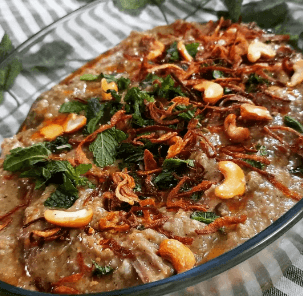
What sets this version apart from other Haleem preparations across the world is the unique texture, royal recipe, and the cooking process perfected over centuries in Hyderabad. The GI tag ensures that only Haleem prepared in the traditional Hyderabadi method, using local ingredients and techniques, can be marketed under this name.
The GI recognition has boosted the dish’s international demand, especially in Middle Eastern and South Asian communities, and has even helped generate seasonal employment for local chefs and workers.
Among the GI Tags in India, Hyderabadi Haleem is a powerful example of how culinary traditions deserve protection just like art and handicrafts — preserving both taste and legacy for future generations.
Banarasi Saree – The Woven Elegance of Varanasi
One of the most treasured GI Tags in India, the Banarasi Saree is a timeless symbol of elegance, craftsmanship, and cultural richness. Granted GI status in 2009, this iconic weave from Varanasi (Uttar Pradesh) is known worldwide for its intricate zari work, luxurious silk, and regal designs.
Originating during the Mughal era, Banarasi sarees were once crafted exclusively for royalty. Today, they remain a preferred choice for weddings and special occasions across India — especially in North India — reflecting centuries-old textile traditions.
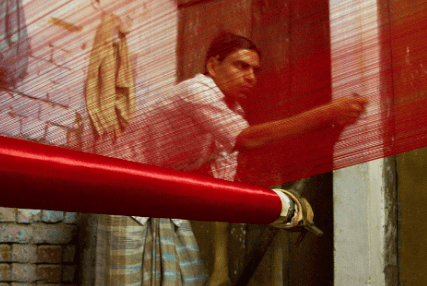

What makes a Banarasi saree GI-worthy? It’s the meticulous hand-weaving technique using fine Mulberry silk, coupled with the use of gold and silver threads, elaborate floral or Mughal motifs, and ornate pallus. A single authentic saree can take anywhere from 15 days to 6 months to complete depending on complexity.
The GI tag for the Banarasi saree has helped protect the identity of genuine weavers, ensuring that only sarees made in the Varanasi region using traditional methods can carry the name. It also safeguards weavers from cheap imitations and helps boost rural livelihoods and India’s textile heritage.
Among the most celebrated GI Tags in India, the Banarasi Saree beautifully showcases how clothing can carry deep historical, economic, and cultural value — all draped in six yards of pure elegance.
Malabar Pepper – The Black Gold of Indian Spice Trade
Among the most iconic GI Tags in India, Malabar Pepper stands tall as the legendary “Black Gold” that once drove global trade and colonial ambition. Grown along the lush Western Ghats of Kerala, this pepper received its GI tag in 2006, reaffirming its historical and economic significance.
Known for its sharp, robust flavor and high piperine content, Malabar Pepper isn’t just any spice — it’s a mark of premium quality with centuries of legacy. It’s believed that ancient traders from Rome, Arabia, and later Europe crossed oceans just to get their hands on this potent black pepper. Even Vasco da Gama’s arrival in Calicut in 1498 was driven by the lure of Malabar’s spices!

What gives Malabar Pepper its edge is the humid tropical climate, loamy soil, and traditional organic farming methods practiced in Kerala. Carefully sun-dried and graded, it is a staple in both Indian kitchens and global cuisines, thanks to its strong aroma and medicinal value.
The GI tag protects local farmers from counterfeit varieties and helps preserve Kerala’s spice-growing traditions. It also boosts the export value of this celebrated spice, linking global demand with local livelihoods.
From ayurvedic medicine to gourmet recipes, Malabar Pepper is more than a spice — it’s a legacy of India’s rich agricultural heritage and trade brilliance.
Kashmir Pashmina – The Luxe Wool Protected by a GI Tag
When you think of elegance and warmth wrapped in heritage, Kashmir Pashmina instantly comes to mind. Recognized under the GI Tags in India in 2008, this exquisite wool product from the Kashmir Valley is renowned worldwide for its incredible softness, fine texture, and artisanal craftsmanship.
Pashmina is made from the undercoat of the Changthangi goat, found only in the cold, high-altitude regions of Ladakh. The wool is painstakingly hand-spun, woven, and embroidered by skilled Kashmiri artisans—a process that takes weeks, sometimes months, to complete.

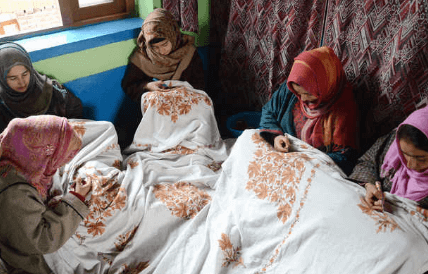
What makes Kashmir Pashmina a significant entry among GI Tags in India is not just its luxurious quality but also the cultural identity it carries. Each piece is a product of centuries-old weaving traditions passed down through generations. The GI Tag ensures that only authentic, locally sourced and handmade products can carry the prestigious “Kashmir Pashmina” name—safeguarding both the legacy and the livelihood of regional weavers.
Sadly, the market is flooded with fake machine-made shawls falsely sold under the Pashmina label. This makes the GI protection even more important for maintaining authenticity and consumer trust.
Today, owning a Kashmir Pashmina isn’t just about style—it’s about celebrating a legacy of craftsmanship that speaks of India’s rich textile heritage.
Recent GI Tags in India You Should Know for Exams
| GI Tag Product | Region | Category | Year of GI Tag | Why It’s Important |
|---|---|---|---|---|
| Alibag White Onion | Maharashtra | Agriculture | 2023 | Known for its unique pungency and medicinal benefits, it helps local farmers thrive. |
| Bhiwapur Chilli | Maharashtra | Spice | 2023 | Famous for its deep red color and heat, boosting agro-based economy. |
| Etikoppaka Toys | Andhra Pradesh | Handicraft | 2022 | Made with natural dyes and softwood; a symbol of eco-friendly Indian craftsmanship. |
| Tandur Redgram | Telangana | Agriculture | 2022 | Pulses with high protein and drought resistance — a boon for sustainable farming. |
| Sundarban Honey | West Bengal | Natural Produce | 2022 | Collected from the mangrove forests, known for purity and free from additives. |
Conclusion: Preserving Heritage Through GI Tags in India
GI Tags in India are much more than legal labels — they are powerful emblems of identity, cultural pride, and craftsmanship. Whether it’s the soothing aroma of Darjeeling Tea or the rich weave of Kanchipuram Silk Sarees, every product protected under GI Tags in India carries the soul of its origin, telling stories of tradition, geography, and generations of skill.
These GI Tags in India serve a vital purpose: they safeguard traditional knowledge, support rural economies, and preserve India’s diverse regional heritage. By granting legal protection to authentic products, GI Tags in India empower local artisans, farmers, and communities to thrive in a competitive market — without the fear of imitation or exploitation.
From Mysore Sandalwood Oil to Banarasi Sarees, each GI-tagged product represents authenticity and originality. In an era dominated by mass production and fast fashion, GI Tags in India remind us to value sustainable practices and responsible sourcing.
Understanding the importance of GI Tags in India helps us become more informed and respectful consumers. So, the next time you choose a product with a GI Tag, remember — you’re not just making a purchase. You’re supporting a legacy, a community, and a piece of India’s living heritage.
GI Tags in India – Quick Reference Table for Exams
| GI Product | State/Region | GI Tag Year | Key Significance |
|---|---|---|---|
| Darjeeling Tea | West Bengal | 2004 | First GI tag in India; globally acclaimed for its unique aroma and taste. |
| Kanchipuram Silk Saree | Tamil Nadu | 2005 | Known for temple-inspired patterns; worn during auspicious South Indian occasions. |
| Muga Silk of Assam | Assam | 2007 | Exclusive golden silk found only in Assam; durable and naturally glossy. |
| Kannauj Perfume | Uttar Pradesh | 2013 | Ancient perfumery tradition; natural distillation methods still in use. |
| Bikaneri Bhujia | Rajasthan | 2010 | Iconic spicy snack; deep-rooted in Bikaner’s culinary heritage. |
| Mysore Sandalwood Oil | Karnataka | 2006 | Highly aromatic and medicinal; used in cosmetics and ayurveda. |
| Hyderabadi Haleem | Telangana | 2010 | First non-veg dish with a GI tag; festive delicacy during Ramadan. |
| Banarasi Saree | Uttar Pradesh | 2009 | Intricate brocade work with gold/silver zari; bridal and ceremonial wear. |
| Malabar Pepper | Kerala | 2003 | Called “Black Gold”; globally traded spice since ancient times. |
| Alphonso Mango | Maharashtra/Goa | 2018 | King of mangoes; rich aroma and sweetness make it highly export-worthy. |
| Kashmir Pashmina | Jammu & Kashmir | 2008 | Luxurious handmade wool; crafted from Changthangi goats’ undercoat. |
MCQ QUESTIONS WITH EXPLANATION
1. Which product was the first in India to receive the GI Tag?
A) Kanchipuram Silk Saree
B) Darjeeling Tea ✅
C) Banarasi Saree
D) Muga Silk
Answer: B) Darjeeling Tea
📝Explanation: Darjeeling Tea was the first product in India to receive the GI Tag in 2004. It set the foundation for GI protection in India and remains one of the most internationally recognized Indian products.
2. The GI Tag for Hyderabadi Haleem is unique because it is:
A) The only vegetarian dish with a GI tag
B) The only sweet with a GI tag
C) The only meat-based dish with a GI tag ✅
D) The oldest culinary GI tag
Answer: C) The only meat-based dish with a GI tag
📝Explanation: Hyderabadi Haleem received its GI tag in 2010 and stands out as India’s only non-vegetarian dish with such recognition.
3. The GI tag for Kanchipuram Silk Saree protects which of the following?
A) The dye used
B) The silk material only
C) The weaving technique and regional identity ✅
D) The retail price
Answer: C) The weaving technique and regional identity
📝Explanation: The GI tag ensures that only sarees woven in Kanchipuram using traditional methods can be sold as “Kanchipuram Sarees.”
4. Which of the following products is associated with the traditional perfume-making industry of India?
A) Malabar Pepper
B) Kannauj Perfume ✅
C) Mysore Sandalwood Oil
D) Muga Silk
Answer: B) Kannauj Perfume
📝Explanation: Kannauj in Uttar Pradesh is known as the “perfume capital of India”, and its GI tag protects ancient distillation techniques and regional essence.
5. Which of the following GI Tags is famous for being made from the undercoat of Changthangi goats?
A) Kanchipuram Silk
B) Banarasi Brocade
C) Muga Silk
D) Kashmir Pashmina ✅
Answer: D) Kashmir Pashmina
📝Explanation: Pashmina wool is sourced from Changthangi goats native to the high-altitude regions of Ladakh. Its GI tag protects its luxurious, handwoven status and region of origin.
6. Which Indian sweet received the GI Tag and is deeply associated with Karnataka?
A) Hyderabadi Haleem
B) Mysore Pak ✅
C) Bikaneri Bhujia
D) Rasgulla
Answer: B) Mysore Pak
📝 Explanation: Mysore Pak, a traditional sweet from Karnataka, earned its GI Tag for its unique taste and preparation method rooted in Mysuru’s royal kitchens. It highlights how GI Tags in India protect regional culinary heritage.
7. The Geographical Indications of Goods (Registration and Protection) Act was passed in which year in India?
A) 1995
B) 2001
C) 1999 ✅
D) 2005
Answer: C) 1999
📝 Explanation: The Geographical Indications Act, 1999, forms the legal basis for granting GI Tags in India, helping protect the intellectual property of region-specific goods.
8. Which GI-tagged product is known as the “Black Gold” of the Indian spice trade?
A) Darjeeling Tea
B) Malabar Pepper ✅
C) Mysore Sandalwood Oil
D) Assam Tea
Answer: B) Malabar Pepper
📝 Explanation: Malabar Pepper from Kerala is renowned worldwide for its quality and flavor. Its GI Tag helps preserve its historical significance in India’s spice trade.
9. Which Indian city is known for its GI-tagged handwoven silk sarees called the “Queen of Silks”?
A) Varanasi
B) Kanchipuram ✅
C) Surat
D) Bhagalpur
Answer: B) Kanchipuram
📝 Explanation: Kanchipuram Silk Sarees are treasured across India. The GI Tag safeguards the artistry and heritage of weavers from this Tamil Nadu town, a key player in GI Tags in India.
10. Which GI-tagged product is a savory snack from Rajasthan with a century-old legacy?
A) Hyderabadi Haleem
B) Bikaneri Bhujia ✅
C) Darjeeling Tea
D) Muga Silk
Answer: B) Bikaneri Bhujia
📝 Explanation: Bikaneri Bhujia is a spicy snack made in Bikaner, Rajasthan. Its GI Tag protects this iconic treat and its traditional methods of preparation passed through generations.

